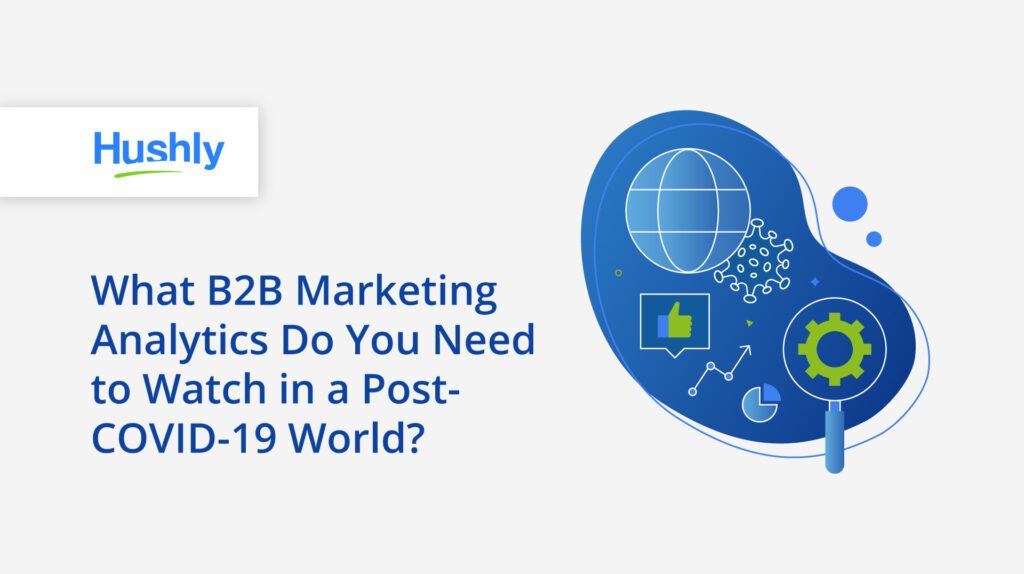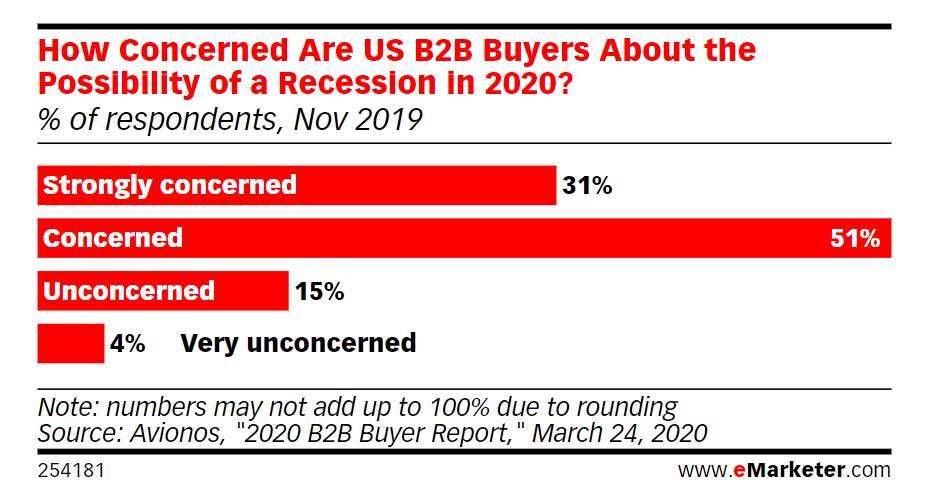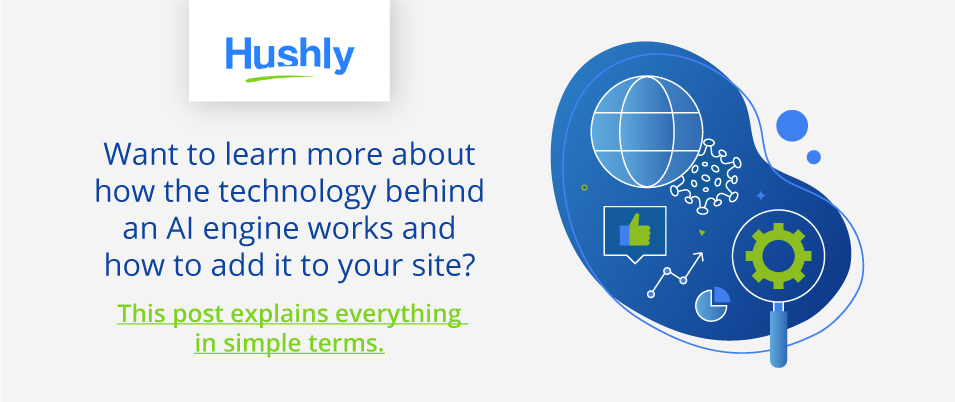The pandemic has changed how everyone conducts business – from small consumer e-commerce suppliers to massive B2B corporations.
Many marketers may not realize that the concept of “essential business” still carries over into the B2B realm – and not in the way you might think.
If your traffic and conversions have drastically dropped off or changed, don’t beat yourself up. Just adjust your tactics. Most importantly, start by looking at what B2B marketing analytics you’ll watch in the post-COVID-19 world.

How Has B2B Buyer Behavior Changed Under COVID-19
Research shows that B2Bs were concerned about a looming recession long before the pandemic shut down the consumer economy.

In November of 2019, 82% of organizations surveyed admitted they were either “strongly concerned” or “concerned” about an upcoming recession. The question now is, what were B2Bs doing to prepare way back then that set them up for potential success today?
About 33% of buyers said suppliers should provide better information on products and services to help them make educated decisions.
That’s not new information either. B2Bs have been saying for months that they want vendors to talk more about both the pros and cons of their product or service. They want to know who isn’t a great fit so they can make the right choice and avoid disappointment.
It also makes sense that 23% said they need more confidence in their purchase decisions. When money is tight, buyers need to know they’re running a smart budget.
It’s worth considering that even B2Bs have surged their spending on remote work tools. 40% of B2Bs said they planned to spend more on an initial investment in supplies to work remotely. Meanwhile, another 30% said spending on video conferencing technology had increased.
Security is also a top priority as workers leave the secure office servers and shift to their personal IP addresses. However, only 15% of organizations increased their spending on security software, like firewalls and VPNs.
What B2B Marketing Analytics Should You Watch Post COVID-19?
Switching from corporate servers to home-based IP addresses poses more challenges than security risks. It also throws off a lot of marketers’ account-based marketing and personalization strategies!
Many marketers rely on IP address data and website traffic to identify firmographics like company names and details. Furthermore, their personalization strategies are cookie-based.
When someone leaves their typical corporate IP address for their residential IP, all that data suddenly disappears.
If your analytics look totally different than they did in January, just know you’re not alone. Everyone is living in an age of disruption and we’re all struggling to adapt.
Next, change what B2B marketing analytics you track. Since everyone is kind of in a freeze-frame moment, you’ll want to shift away from tracking bottom-line conversions towards other metrics.
Social Media Engagement
People already spent plenty of time browsing Facebook, Twitter, and LinkedIn before COVID-19. Today, however, social media traffic has skyrocketed by 20% since the lockdown began.
Your conversion rates might not be what they once were, but you can still focus on areas like branding and social selling. On that note, you’ll want to closely track your social media engagement.
Are you earning more followers? Are people commenting on and sharing your content?
Don’t forget to participate in conversations and ask questions.
Blog Traffic
Your blog traffic tells a story about your content’s effectiveness right now. Relevant, valuable, and non-salesy content was always important. But when buyers aren’t actively looking for vendors, high-quality content matters even more.
If your search rankings haven’t dropped and you’re still regularly posting on social media but your blog traffic still took a nosedive, it might be worthwhile to reevaluate your entire blog approach.
What do 90% of top-performing B2B blogs have in common? They focus on answering audience questions and solving problems. Focus on your audience’s key hurdles at the moment and position yourself to help – even when you don’t stand to gain anything.
Key Content Assets
Like your blog, your key content assets like eBooks, podcasts, and videos also tell a story about your content quality.
If your lead magnets are truly valuable to your audience, they should still be earning traffic and downloads. If they’re not, your content might be too promotional. Make sure you’re creating content that adds value and nuance.
Plus, when spending increases a bit, B2Bs will remember who was there for them with relevant content and who was just trying to make a quick buck.
How to Create the Best Experience for Your B2B Buyers and Customers
Creating a hyper-personalized experience is the key to earning traffic and engagement even during the most difficult times.
You might have a ton of awesome information on your website, but if the experience isn’t interactive and personalized, how can visitors find it?
Artificial intelligence is the answer.
Instead of relying on IP addresses to personalize your website, AI uses real-time browsing data. Every visitor gets a completely personalized experience whether they’re a collected lead or anonymous visitor.
Let’s say someone arrives at your website because they saw a blog post you shared about non-profits on social media. The AI engine takes note of the topic (non-profits), how long they spent reading the blog, and what they click on next. These pieces of data allow the AI engine to offer personalized content recommendations.
That’s why AI is so useful for stretching your marketing budget during tough times. You don’t have to spend hours researching your leads and following up with personalized offers. The AI engine allows leads to self-nurture and educate themselves at their own pace.
In other words, you can spend more time social selling, creating content, researching your audience, and building connections because you’ll spend less time on personalized delivery.
This is especially useful for account-based marketing in the COVID-19 era when many companies aren’t returning to the office and IP addresses have completely changed.
Want to learn more about how the technology behind an AI engine works and how to add it to your site? This post explains everything in simple terms.


